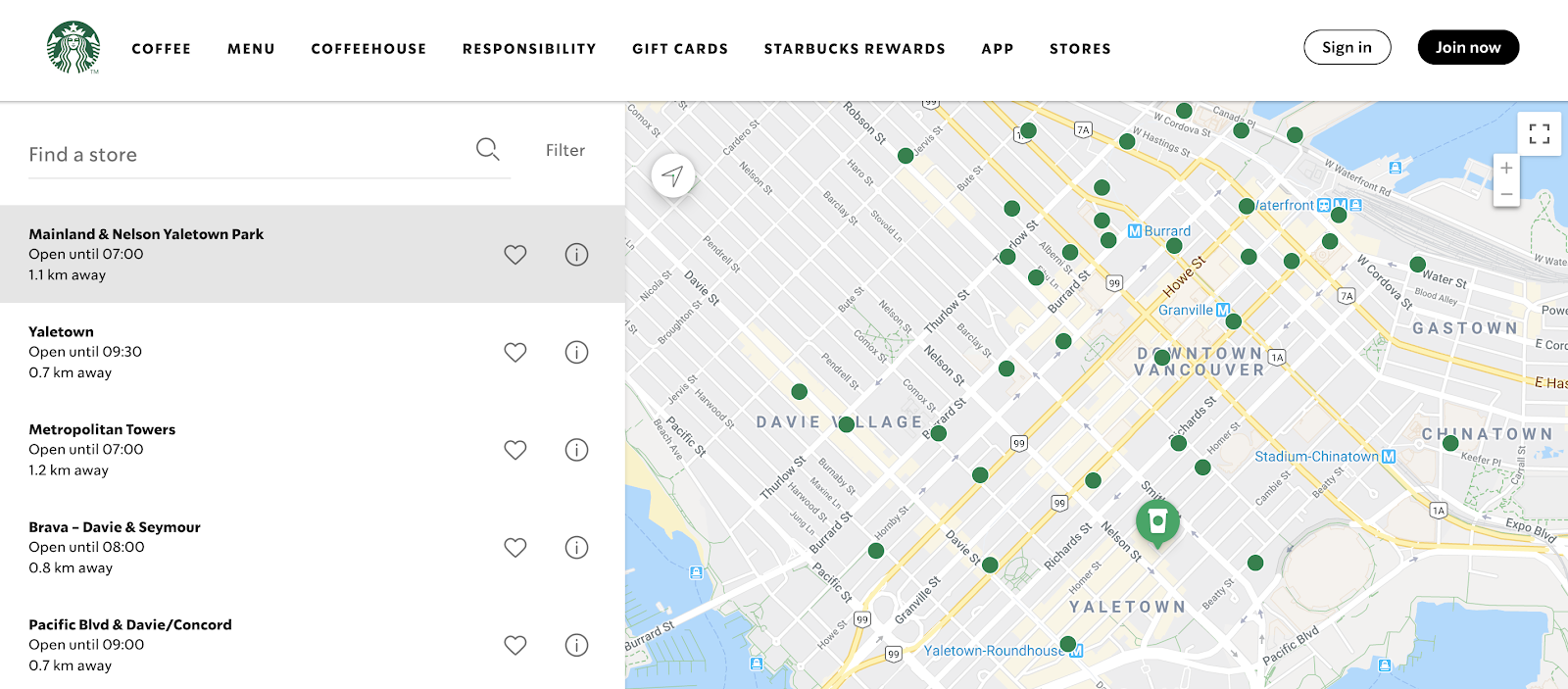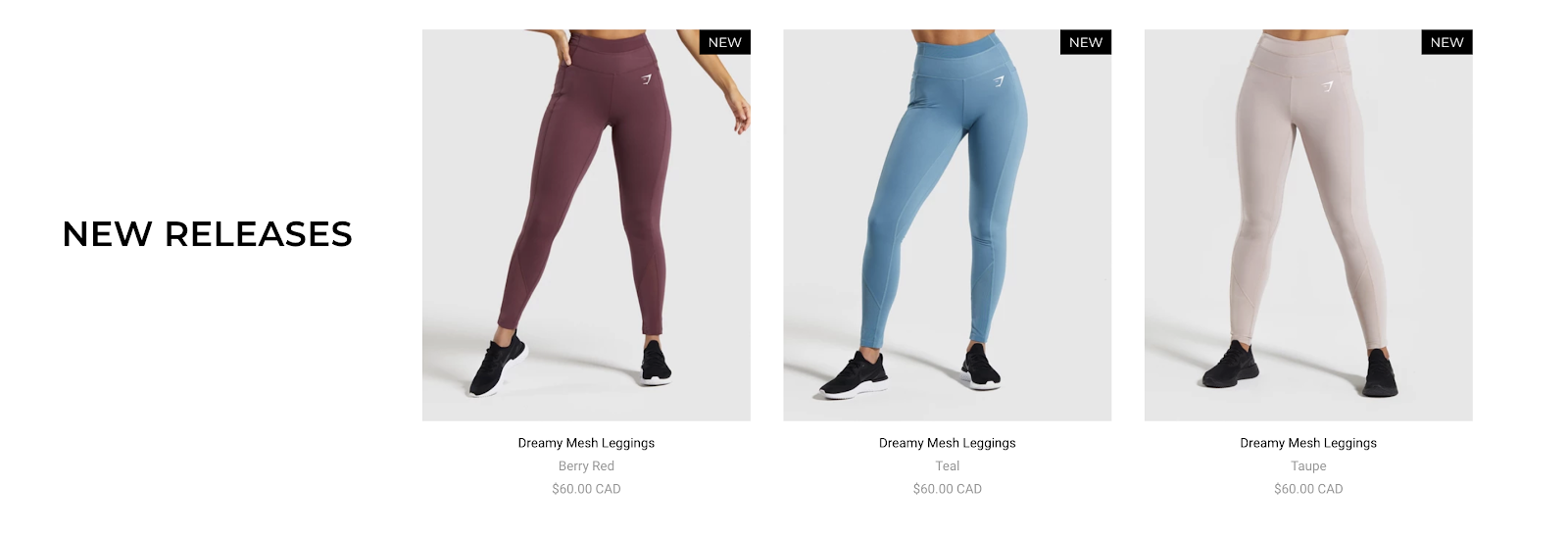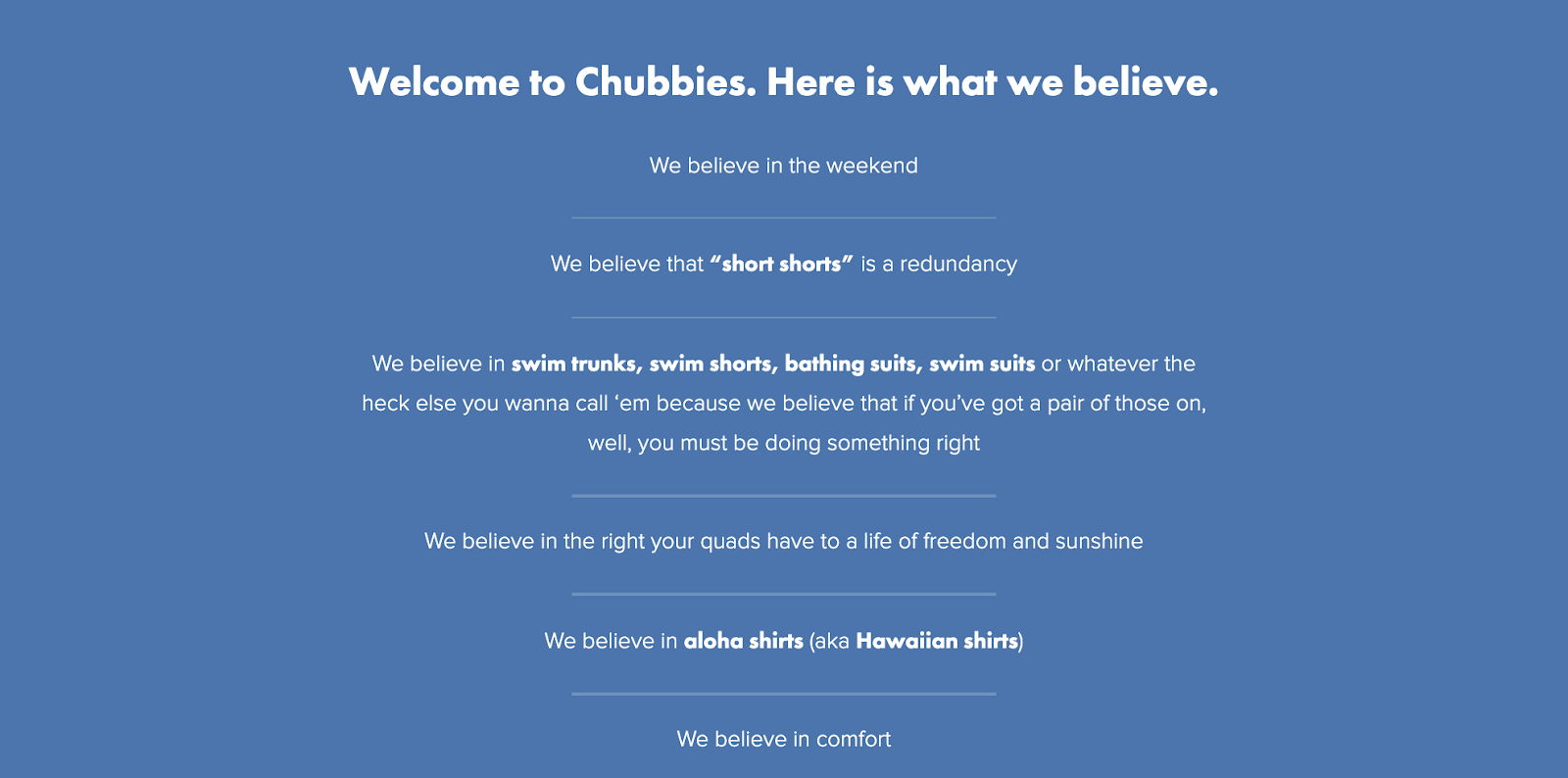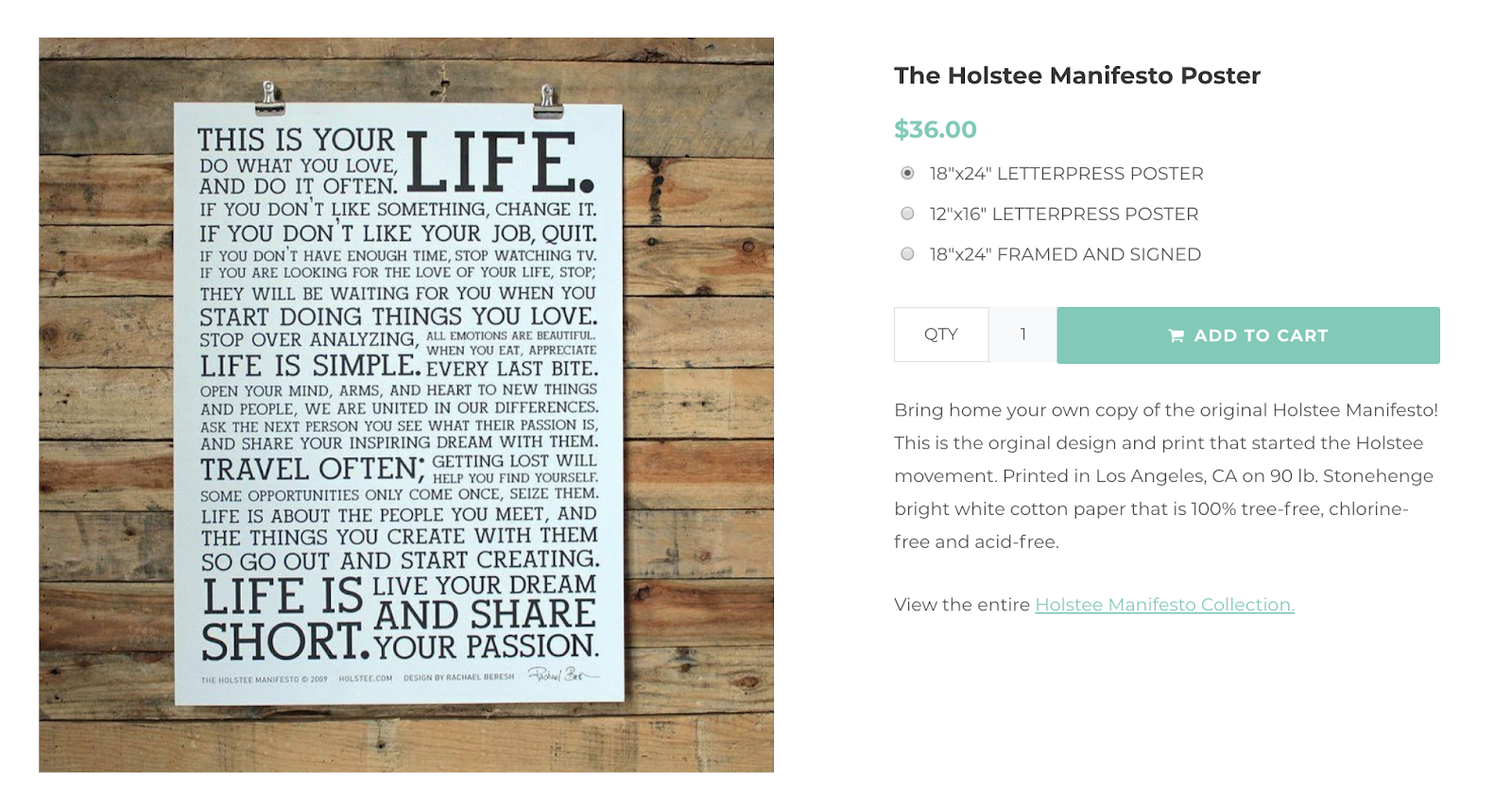As Peter Drucker famously wrote, “The aim of marketing is to know the customer so well the product or service fits them, and sells itself.”
In conversion optimization, we talk about the importance of knowing our customers a lot.
But we rarely talk about the process of strategically segmenting our audience so that our products and services can sell themselves.
@els_aerts absolutely killing it at #cxllive. pic.twitter.com/8yuOoIWtSZ
— Shanelle Mullin (@shanelle_mullin) March 29, 2018
What is segmentation?
Segmentation is the process of breaking a large audience down into smaller, more manageable chunks.
When you get a pack of Smarties, you don’t just tip the box back and eat them all at once (unless you’re a monster). Instead, you separate them by color so that you can, of course, eat the red ones last. That’s segmentation.
Why you need segmentation
Segmentation has many benefits. Like data segmentation, audience segmentation makes it easier to uncover optimization opportunities that you might not see when looking at aggregate data. The other core benefits of audience segmentation are:
- Being able to assess the current value and potential value of your audience(s).
- Strategically expanding your total addressable market (TAM). You can’t assume what’s true for your current audience is true for your current (and future) TAM.
- Identifying new product development opportunities you might have otherwise overlooked.
- Refining your brand positioning based on actual data instead of best guesses.
There are dozens of applications for segmentation. You can use segmentation to run smarter tests, launch more effective paid ads, send more compelling emails, etc.
The problem(s) with segmentation
Segmenting a pack of Smarties is a bit more straightforward than segmenting your audience. It’s not as cut and dry as many marketers believe. It gets a bit complicated because:
- There are a million ways to divide an audience. You can divide them by location, by how they use your product, by the devices they use, by their interests, by how they found you, or even by where they went to school in 7th grade—you get the point. How can you tell which method of division is the most precise? How do you know which one is the most useful? What if different segments clash—how is someone categorized?
- Everything and everyone is always changing. Not to get existential here, but humans aren’t static. They don’t exist in neat little packages that you can slap a cute avatar on and laminate for the office. The way people behave is changing, who people are is changing, your site is changing, your product(s) is changing, etc.
- Targeting can be very difficult. Once you have your segmentation strategy in place, you need to assign people to the right segments. That can be difficult depending on your data structure and tech stack, especially if it’s siloed. Additionally, you now need to be able to target these segments via your activation channels. Sure, it’s simple enough to target women ages 24–35 earning over $100,000 a year in Atlanta, but what if you want to target fear-motivated, familiarity-seeking buyers?
3 core categories of segmentation
As mentioned, there are endless ways to segment your audience. Most fall into one of three categories, though: behavioral, demographic, or psychographic.
1. Behavioral
This is the category of segmentation you’re likely most familiar with. Behavioral segmentation divides people based on previous actions they’ve taken.
It’s why Netflix recommends a weird amount of reality TV to me:
And why Amazon tries to entice me with books, exclusively:
And why Spotify won’t let me forget my punk rock youth:
You do X, you’re assigned to segment Y, and you receive personalization Z. Simple, straightforward, and quite common.
The major pros and cons of behavioral segmentation are:
Pros
- Big data has made data collection seamless. With the right tool, from Google Analytics to Quantcast, marketers have access to much more data than they actually use.
- It’s based on proven habits and behaviors.
Cons
- It’s easy to generalize intent and the probability of repetition. For example, have you ever purchased a mattress, fridge, or expensive vacation—only to be pushed to purchase another, oh, three months later?
- Motivations and intent separate us. If you and I purchase the same business book, how much do we have in common besides that single purchase? Maybe you’re an aspiring small business owner who bought it for research purposes while I bought it for a colleague, for example.
2. Demographic
This is another category of segmentation you’re likely already familiar with. Demographic segmentation divides people based on physical and socioeconomic factors: age, location, gender, ethnicity, education level, income level, etc.
It’s why Starbucks recommends a store based on my current location:
And why LinkedIn thinks I’d be interested in jobs posted by companies in Toronto that have hired quite a few Shopify (where I work) and University of Waterloo (where I went to school) alumni:
And why Gymshark shows me recommendations for women’s clothing first:
The major pros and cons of demographic segmentation are:
Pros
- Similar to behavioral data, demographic data is readily available thanks to big data and third-party tools. It’s easy to access, and sorting is relatively binary.
- It’s easy to target people based on their demographic data, especially with paid ad platforms.
Cons
- Demographic segmentation is incredibly broad and makes a lot of assumptions. How much do you have in common with everyone in your zip code? How much does the man who is married with two kids and a six-figure job at 27 have in common with the man who is single with two roommates and a Led Zeppelin cover band at 27?
- Demographic segmentation relies on shallow, often temporary data. How much does someone change when they move from Wisconsin to Iowa? When Google announced the “death of demographic segmentation”, they used the concept of the “new moms” segment (i.e. women 20–35 with at least a high-school education and a middle-of-the-road income) as an example. But, in 2019, women are marrying and having children later, and men are taking on more active parenting roles. How does demographic segmentation account for gender fluidity? How does it account for freelancers whose income may vary widely from one year to the next?
In majority of cases demographic data of your customers is the least important thing. Customer behavior/lifestyle/beliefs/intent matters way more than age… age is just a number!
— Peep Laja (@peeplaja) September 18, 2019
3. Psychographic
This is the category of segmentation you’re likely less familiar with. Psychographic segmentation divides people based on beliefs, emotions, personality traits, motivations, intent, interests, lifestyle, worldviews, etc. It’s a bit harder to see, unaided.
Psychographic segmentation is often intertwined with brand, making it almost impossible to identify without confirmation from the company.
It’s why Chubbies includes their belief statements on their site:
And why Holstee’s corporate manifesto went viral:
Actually, it’s why most things go viral within certain segments:
"I don't use a mouse in Excel." https://t.co/4u6EorqCCe
— Microsoft Excel (@msexcel) September 19, 2019
It’s also why appeals to emotion can be so effective:
Where would CrossFit, veganism, and Bayesian statistics be without psychographic segmentation? Amirite?
Psychographic segmentation occasionally gets a bad rap. In fact, I’ve written an entire article on why segmenting based on the popular buyer modalities, which are based on personality traits, is a bad idea. It’s worth exploring, though, as long as you do so responsibly.
The major pros and cons of psychographic segmentation are:
Pros
- You’ll get to the why behind the who and the what. You’ll get an understanding of unarticulated needs, desires, and motivations.
- Psychographic is less sensitive to change over time compared to behavioral and demographic segmentation because it cuts closest to who people are as human beings. It’s very difficult to change someone’s beliefs, especially compared to surface-level things, like geography and current behavior.
- Psychographic segmentation enables you to craft smarter, more compelling messaging. When expert copywriters talk about voice of customer copy, they’re referencing copy fueled by psychographic evaluation.
Cons
- Without a psychographic survey or interviews, you won’t be able to rely on this segmentation method.
- It’s more difficult to translate psychographic segmentation factors to those you can target in emails, ads, etc.
- It’s very easy to half-ass psychographic segmentation (see the buyer modalities). The benefits are alluring, so it’s common to apply pseudoscience and pop psychology with reckless abandon instead of putting in the work required to pull it off.
Combine for best results
Alone, no segmentation category is perfect. For best results, you should combine all three to generate robust, data-driven segments that propel your marketing campaigns and experimentation program forward.
Machine learning is playing an increasingly large role in segmentation. (See this article, for example.) As with anything related to AI and machine learning, this does not negate the need for strategic marketing thinking.
It’s still up to you to set the segmentation strategy and decide how best to divide your audience, with or without a machine learning tool or algorithm at your disposal.
Regardless of how you approach segmentation, your strategy should solve for three things:
- Distinction. To be effective, your segments need to be distinct from one another.
- Targeting. To be effective, your segments need to be targetable on first- and third-party tools.
- Durability. To be effective, your segments need to be valuable throughout the entire lifecycle. For this reason, segments should connect to customer lifetime value.
Finally, when approaching segmentation, minimize the differences within your segments and maximize the differences between your segments.
How to get segmentation right
The specifics of how to segment depend heavily on the application and context.
How you apply your segments to email, paid ads, social media, your site, your in-product experience, etc., will vary wildly.
How Company A applies segments will differ from how Company B applies segments. It depends on a number of factors, ranging from their data warehouse to their TAM expansion objectives.
There’s no prescribed, universally right way to apply it, unfortunately. What is universally important is that you have a strategy for how you select your segments.
Here are some principles to guide your application.
Start somewhere
Anything is better than nothing. It’s unlikely that you’re going to develop a fully formed segmentation strategy if you’ve never, well, tried segmentation. Just get started.
If you’re a startup with access only to basic data from Google Analytics and your CRM, start by looking at people who have made a repeat purchase versus people who haven’t. Or people in North America versus people in Asia. Or people who have visited the site before versus people who haven’t.
You’ll experiment your way into insights, which will inform smarter segmentation, which will lead to new insights, which will eventually lead you to a more meaningful strategy. You don’t need to jump into psychographic surveys and interviews on Day 1.
Focus on the need
There are no hard-and-fast rules for when you should start thinking about segmentation. Ask yourself three questions:
- Why am I segmenting my audience?
- What business need am I trying to solve through segmentation?
- How well do these segments serve that business need?
If you can answer all three, it’s a good time to start thinking about a segmentation strategy. Make sure there’s close alignment between the strategy and the application. It’s surprisingly easy to drift away from that business need as you move through this process.
Experimentation for experimentation’s sake is useless. So is segmentation, and personalization, and, well, pretty much anything. You end up doing the thing just to say you do the thing.
Constantly evolve
Much like experiment results, segments degrade over time. Segmentation strategies should be durable, but never static. This isn’t a one-and-done process that will serve the company for years to come.
You have to change the way you segment, adjust your segmentation parameters, etc., on a regular basis. If not, there’s a good possibility you’ll end up making major business and marketing decisions based on out-of-date, unreliable data.
Expect to invest a lot of time and energy upfront, but also expect to invest in continuous maintenance—regular checks and balances.
Conclusion
When you speak to a crowd of people, your message will be more compelling to some than to others. Some people will “get” your introduction, some won’t. Some will think your joke is funny, some won’t. Some will respond to that emotional appeal, some won’t.
Segmentation is what allows you to understand those differences. Instead of delivering one mediocre speech to everyone, segmentation allows you to deliver many perfect speeches to many specific audiences.
If you want your products and services to sell themselves, it’s not enough to know your customers. You’ll need to strategically segment those customers you know so well.
Here’s the step-by-step process:
- Define the business need you’re trying to solve with segmentation.
- Be aware of the imperfections of segmentation categories and the issues that come with each.
- Start somewhere—start anywhere! Even the simplest application is better than nothing. See what works and what doesn’t.
- Eventually, combine behavioral, demographic, and psychographic data to create a segmentation strategy.
- Constantly invest in the maintenance of your segmentation strategy. Evolve with your customers, your site, your product, and your industry. Nothing lasts forever.










